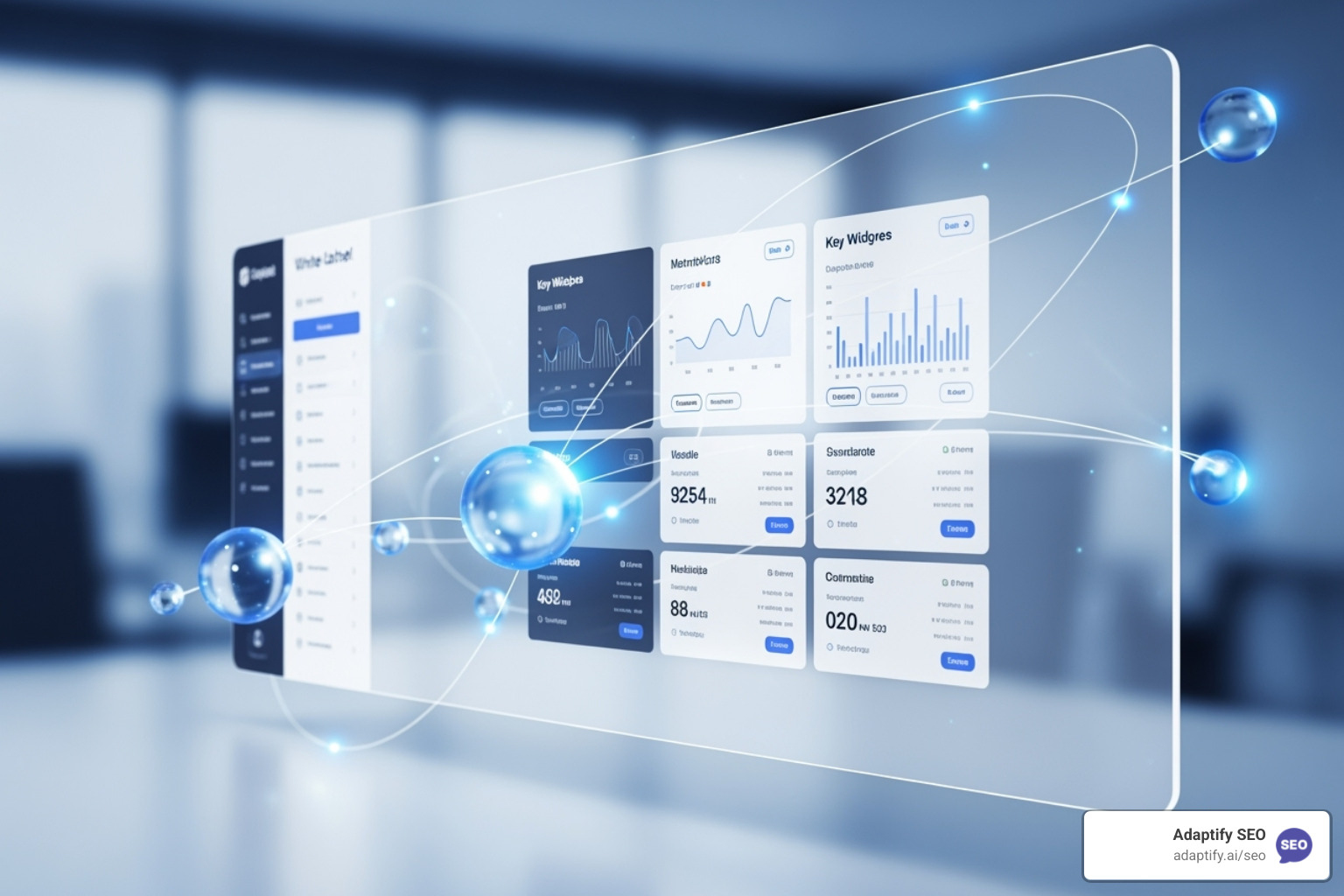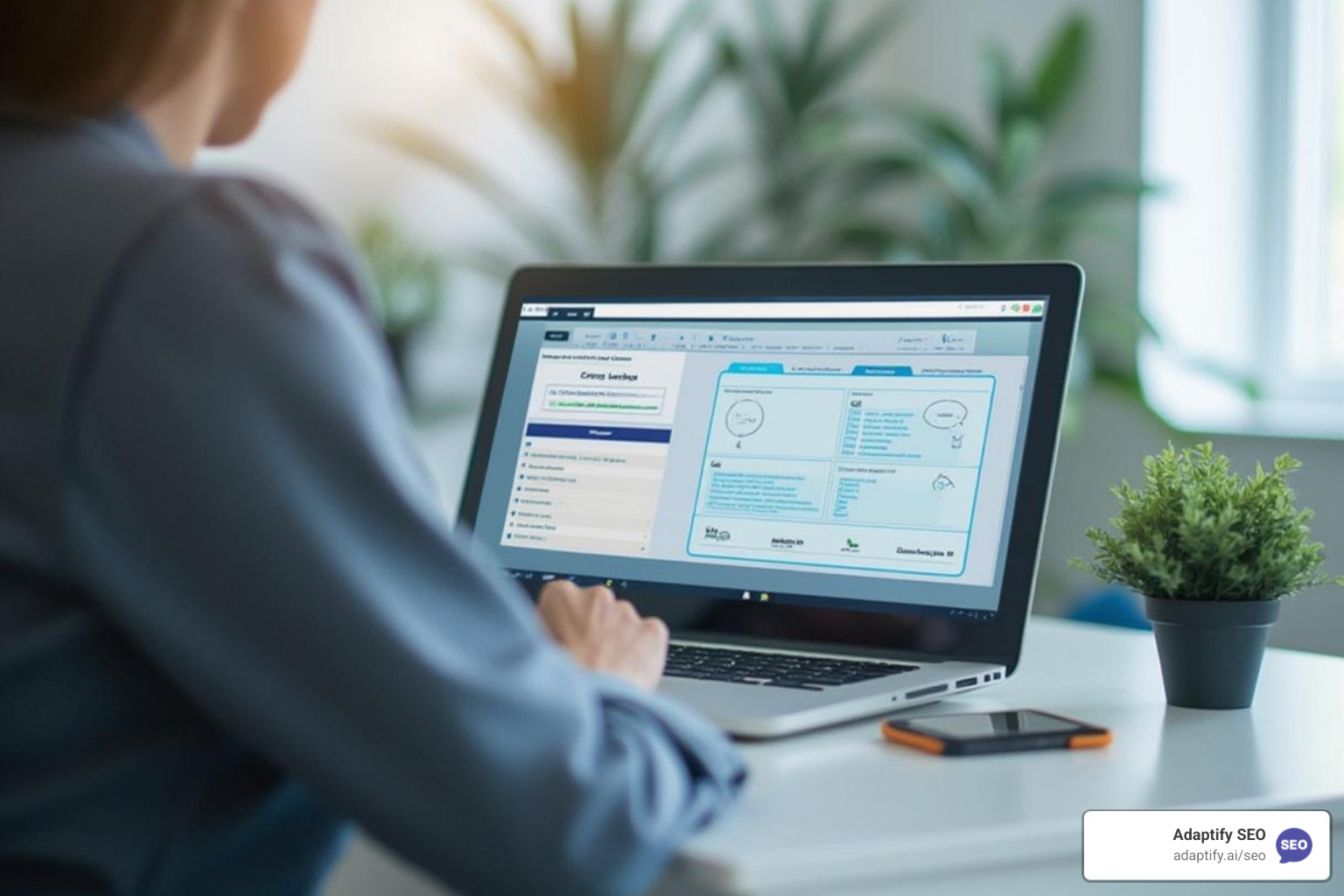White Label Client Portals: Elevate Your Brand and Streamline Communication
Hansjan Kamerling
Aug 8
Why White Label Client Portals Are Essential for Modern Agencies

A white label client portal is a customizable online platform that lets agencies deliver services and communicate with clients under their own brand, hiding the third-party software provider.
Key aspects of white label client portals:
- Rebranding capability: Add your logo, colors, and custom domain.
- Client communication hub: Centralize messaging, file sharing, and project updates.
- Automated workflows: Reduce manual tasks like chasing clients for information.
- Professional presentation: Maintain brand consistency across all client touchpoints.
- Cost-effective scaling: Avoid expensive custom development while growing your agency.
Many agency owners struggle with manual tasks and client management, juggling multiple clients with inefficient tools like email chains that look unprofessional. This has a significant impact; research shows companies can save over 4 hours per client on onboarding alone with a proper portal. Many agencies find that a single person can now accomplish the work that once required multiple team members after implementing the right solution.
The solution is a branded, centralized hub for clients. This guide will show you how to choose, implement, and maximize a white label client portal for your agency.
I'm Hansjan Kamerling, and I've designed and implemented white label client portal solutions for SaaS platforms and agencies throughout my career. My experience includes working with data analytics platforms serving 40,000+ users and leading design for fintech startups that raised millions in funding.
What is a White Label Client Portal and Why Do Agencies Need One?
Imagine your client logging into a dedicated online space that looks and feels exactly like an extension of your brand, not some third-party software. That's the magic of a white label client portal.

At its core, a white label client portal is a pre-built online platform you can rebrand. Your clients only see your polished, professional brand, which is why it's often called rebranding software. This SaaS model solution lets you use your own custom domain, strengthening your brand with every interaction. A portal allows you to deliver a professional experience for your clients, partners, or team that looks and feels like your brand.
This professionalism builds immense client trust. Agency owners often seek solutions that are white-label, allow client self-signup, and include internal messaging systems, reflecting a common desire for seamless, branded client interaction.
By using a pre-built platform, agencies save significantly on development costs and get running much faster than building from scratch. It’s a strategic move towards greater operational efficiency and scalability, allowing growth without massive upfront investment. For more details on how white labeling can transform your services, check out our insights on white-label services.
Enhancing Brand Identity and Client Experience
In a competitive landscape, brand identity is everything. A white label client portal is a powerful brand-building tool, presenting a unified image that improves trust and credibility. When a client accesses a platform with your logo, colors, and fonts, it fosters strong brand consistency and reassures them they are in capable hands.
This personalized touch improves the client experience, changing a transactional relationship into a collaborative partnership. It leads to increased client retention and loyalty. Directors often emphasize the importance of controlling content sharing and maintaining brand consistency to ensure a trusted customer experience. Providing a centralized hub for all interactions creates a seamless customer journey, with users frequently praising the ease of branding their own customer portals and the professional interface they provide.
Streamlining Agency Operations and Communication
Agencies often spend countless hours in messy email chains, chasing clients for information, and manually updating project statuses. A white label client portal is a lifesaver.
These portals reduce manual tasks and eliminate email clutter by providing a centralized space for file sharing, project progress tracking, and communication. Features like secure file sharing, streamlined client requests, and automated reminders simplify client management.
The time savings are remarkable. Industry data indicates that such platforms can significantly reduce time spent on onboarding, with some reporting savings of over 4 hours per client, streamlining the process to mere minutes. Furthermore, agencies have achieved full program capacity and saved over 50 hours each week by eliminating manual back-and-forth communication. This efficiency frees up your team to focus on high-value tasks instead of administrative work.
The Core Benefits of Using a White Label Client Portal
A white label client portal can transform agency chaos into streamlined success by balancing client expectations, team productivity, and your bottom line.
The financial benefits are game-changing. Building a custom portal costs tens of thousands of dollars and takes months. A white label solution provides a feature-rich platform at a fraction of the cost, ready to launch in days.
Beyond cost savings, these portals offer enterprise-level security, protecting sensitive client data and giving you a competitive edge over agencies using generic tools. The result is faster client onboarding, improved satisfaction, and healthier profit margins. When operations run smoothly, your team can focus on high-value work, and your agency can grow sustainably.
Achieve Best Brand Consistency
Every client touchpoint strengthens or weakens your brand. A white label client portal ensures it's always strengthening by maintaining a professional impression throughout the relationship.
Instead of redirecting clients to a generic platform, a white label portal features your logo, brand colors, and a custom domain (e.g.,
portal.youragency.com), creating a cohesive experience. This isn't just about aesthetics; it's about building trust. Consistent branding communicates competence and builds "brand equity"—the valuable reputation that attracts and retains clients. For examples of how we maintain this consistency, see our approach to proposals.Boost Efficiency and Save Resources
The efficiency gains from a white label client portal are remarkable. By automating processes like client information requests, manual updates, and file exchanges, the portal saves your team hours each week. The efficiency gains can be dramatic, with reports indicating that a single person can accomplish the same amount of work that once required four people.
The cost savings are significant. You avoid the massive upfront investment of custom development and the ongoing expense of dedicated IT staff. More importantly, you free up your team for work that grows your business: strategy, creativity, and client relationships. This automation eliminates the stress of manual processes, as everything lives in one organized, accessible place. The saved resources can be reinvested into delivering exceptional results. To see how this efficiency extends to content management, explore our content services.
Key Features to Look For and How to Implement Your Solution
Choosing the right white label client portal requires a blend of robust features and ease of implementation. A successful strategy involves defining requirements, choosing a provider, setting up branding, configuring workflows, and carefully onboarding clients.

Key Features of a Modern White Label Client Portal
An effective portal should be a comprehensive hub. Here are the essential features to look for:
- Customization Options: Non-negotiable for a white label solution. You need options to match your brand's visual style, including logos, colors, fonts, and layout.
- Security & Compliance: Security is paramount. Look for data encryption (256-bit SSL, AES), secure login (2FA), and robust permission controls. Compliance with GDPR, SOC 2, and HIPAA is crucial.
- Integration Capabilities: The portal must integrate with your existing tools. Look for Zapier and Make integrations, plus API access for custom connections. The ability to embed tools is also a huge plus.
- File & Document Management: A secure, organized way to share and manage files is fundamental. Features should include version control, secure sharing, and easy client uploads.
- Communication Tools: Centralize conversations with built-in live chat, announcement boards, and discussion forums to eliminate messy email threads.
- Task & Project Management: Assign tasks, track progress, and manage milestones directly within the portal to keep everyone on the same page and projects on time.
- Analytics & Reporting: Track client activity and project performance to gain valuable insights, optimize services, and improve client interactions.
- Mobile-friendliness: Your portal must be responsive and accessible on any device, allowing clients to check updates or upload files on the go.
Implementing Your White Label Client Portal
A structured approach makes implementation manageable.
- Define Your Requirements: Before looking at software, outline what your portal needs to do and which pain points it will solve.
- Choose a Development Path: Decide between a SaaS White Label Platform (faster, lower upfront cost) or Custom Development for highly unique needs.
- Set Up Branding: Make the portal yours by uploading your logo, setting brand colors, and configuring a custom domain. For advanced domain configurations, you might refer to technical documentation on web servers.
- Configure Workflows: Tailor the portal to your agency's processes. Set up user permissions and build custom workflows for onboarding, updates, and file collection.
- Onboard Clients: A smooth onboarding process is crucial for adoption. Provide clear instructions and tutorials.
- Gather Feedback and Iterate: Continuously gather feedback from clients and your team to make adjustments and improve the portal over time.
Common Use Cases and Potential Limitations
Understanding where white label client portals shine—and where they have limitations—is key to success. They are versatile tools, but it's important to be aware of potential drawbacks.
How Different Industries Leverage Client Portals
The versatility of a white label client portal allows different industries to use it in unique ways.
- Marketing & SEO agencies use them for secure client reporting, sharing campaign data, collecting assets, and managing milestones. For white label SEO, a portal is the perfect delivery mechanism, presenting results under the agency's brand.
- Financial services professionals, like accountants and advisors, need bulletproof security for sharing sensitive financial data. Portals provide this with robust compliance and confidential communication.
- The education sector uses portals to manage student information, share course materials, and track progress, revolutionizing the learning experience.
- Real estate professionals have found that portals eliminate paperwork nightmares by helping share listings, manage schedules, and facilitate document signing.
- Consulting firms use portals as a central command center for sharing deliverables, managing timelines, and collecting feedback.
- Specialized niches, from escape rooms to construction companies, find creative applications for project management, blueprint sharing, and client communication.
Potential Drawbacks to Consider
While powerful, it's important to consider the potential challenges of white label client portals.
- Dependence on your provider: You are reliant on your provider's uptime, pricing, and feature set. Any changes on their end can impact your operations.
- Limited customization compared to custom builds: While highly customizable, a white label solution won't match the infinite flexibility of a custom-built platform. You may face limitations with extremely niche requirements.
- Ongoing subscription costs: These portals typically require monthly or annual subscriptions, which can add up over time as your agency scales.
- Potential for lack of differentiation: If you only apply basic branding to a common platform, your portal might look similar to competitors. This is overcome by using advanced customization and creating unique workflows.
Understanding both the benefits and limitations is crucial for making an informed decision.
Frequently Asked Questions about White Label Client Portals
Here are answers to the most common questions agencies have when considering a white label client portal.
How secure are white label client portals?
Security should be your top priority. Reputable providers offer robust security features, often exceeding what an agency could manage independently. Look for:
- Data encryption: Bank-grade, 256-bit SSL for data in transit and AES encryption for data at rest.
- Secure login features: Two-factor authentication (2FA) to prevent unauthorized access.
- Role-based permissions: Granular control over who can see what information.
- Compliance standards: Adherence to SOC 2, GDPR, and HIPAA (if applicable).
- Regular backups: Automated backups to prevent data loss.
How long does it take to set up a portal?
The setup time is a major advantage over custom builds. Basic SaaS solutions can be deployed in minutes or hours. The timeline depends on your customization level; a simple setup with your logo and colors is fast, while complex workflows and integrations may take days or weeks. Remember to allocate time for data migration and user onboarding, as a smooth rollout is critical for adoption.
Can I integrate my existing agency tools?
Yes, a good white label client portal should improve your existing toolkit, not replace it. Key integration features include:
- API access: Allows for powerful custom connections to sync data automatically between your portal and other software.
- Zapier and Make integrations: These platforms connect thousands of apps without any coding, automating workflows between your portal and CRM, project management tools, and more.
- Direct integrations: Many portals offer direct connections with popular tools like Google Drive or Salesforce. Some even let you embed tools directly into the portal interface.
For SEO agencies, this capability is crucial for pulling data from SEO tools to create consolidated, branded reports. The best portals break down silos, not create them. For more insights on streamlining processes, explore our backlink services.
Conclusion
A white label client portal has evolved from a nice-to-have feature into a game-changer for modern agencies. By implementing a portal, chaotic email chains disappear, and your team spends less time chasing information and more time delivering exceptional results.
The benefits are clear: streamlined communication, strong brand consistency, and operational efficiency that saves hours every week. This not only improves your processes but also lifts your agency's reputation. By freeing your team from administrative tasks, you can focus on strategy, innovation, and building stronger client relationships.
At Adaptify SEO, we understand the power of automation. Our automated SEO services streamline everything from strategy to content creation and link building. Pairing these efficient processes with a white label client portal creates a powerhouse combination that delivers exceptional results under your own brand.
The future of client management is automated, professional, and entirely yours.
Ready to revolutionize how you manage clients and scale your agency with confidence?
